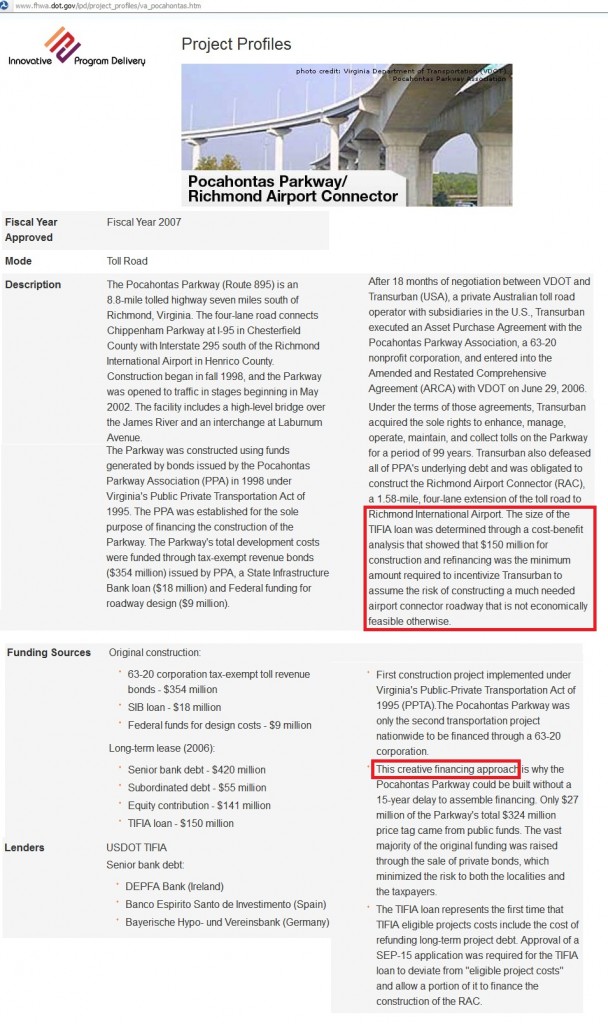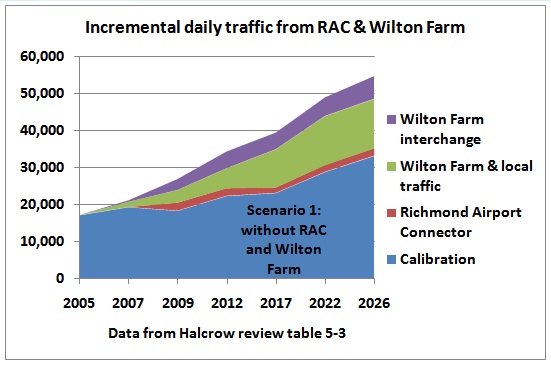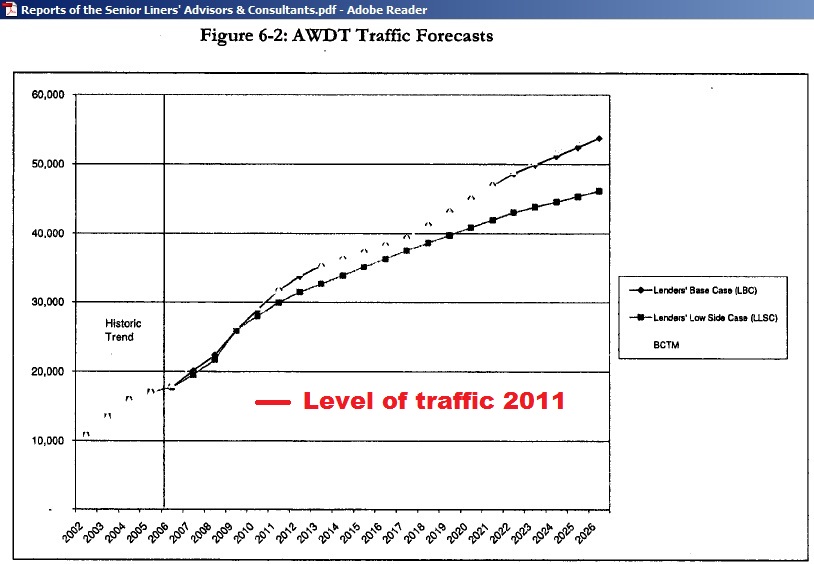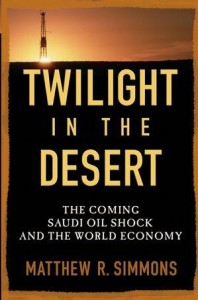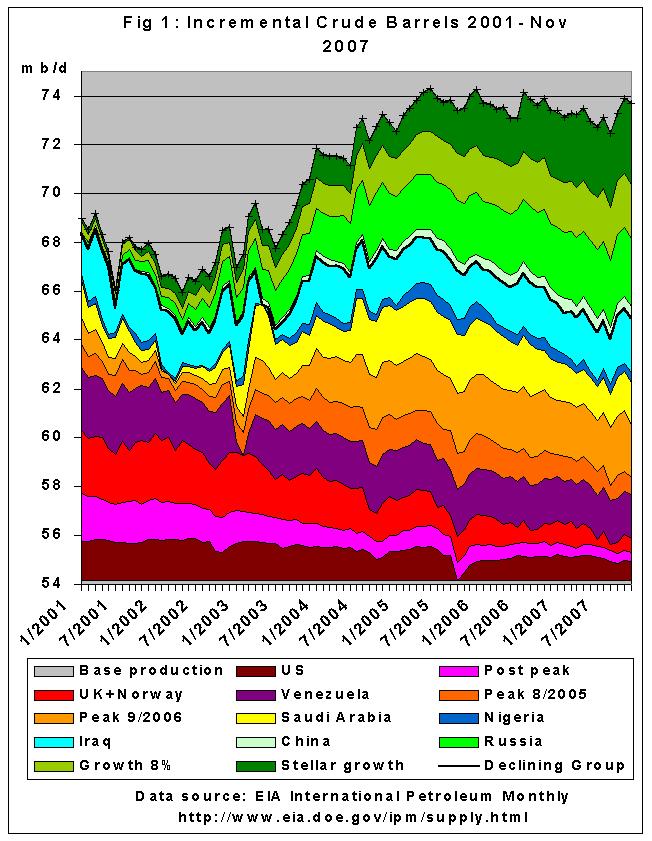The Pocahontas tollway South of Richmond, Virginia, is the latest example how the combination of embellished traffic projections and a weak economy – caused by high oil prices – have resulted in equity write-downs and bad debt in an ill-conceived PPP.
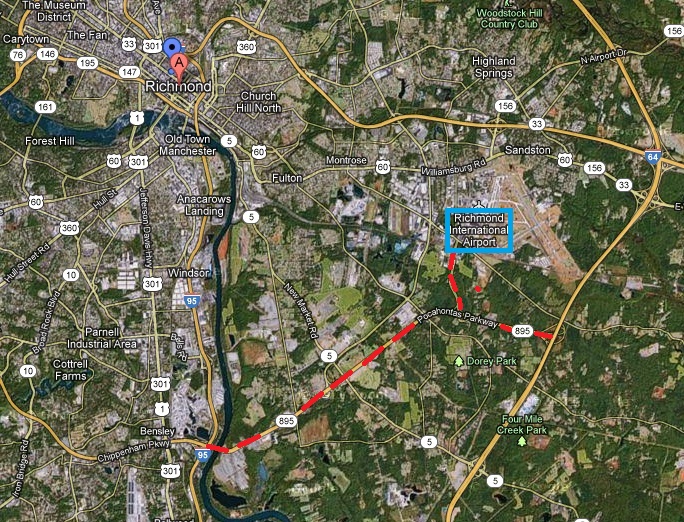 The Pocahontas toll-way South East of Richmond, Virginia, part of an orbital around the city.
The Pocahontas toll-way South East of Richmond, Virginia, part of an orbital around the city.
From the Sydney Morning Herald
Haunted Road gets written down
June 19, 2012
Transurban provided some unconvincing reasons yesterday for the write-down in the value of one of its US toll-road concessions to zero.
”Based on revised traffic forecasts, Transurban now believes Pocahontas’s future cash flows will be significantly impaired relative to the original forecasts,” said the company’s outgoing chief executive, Chris Lynch, about the Virginia Pocahontas Parkway.
Lynch blamed the write-down on the ”difficult macro-economic environment” and the housing downturn in the US.
The Transurban chief stunned some Pocahontas Parkway watchers by not mentioning one key factor that could have scared some motorists from the road.
”Drive down Pocahontas Parkway on haunted route 895, and you might just see the ghosts of native Americans going about their lives as if the freeway is still their camp and hunting grounds,” one website notes.
http://www.smh.com.au/business/haunted-road-gets-written-down-20120618-20k9r.html
Well, the real ghosts disturbing the tollway game are embellished traffic projections and peak oil ignorance. They haunt not only Transurban’s accounts but also the books of 3 European banks from Ireland, Spain and Germany who made the mistake of investing in the Pocahontas Parkway in 2006. Did you ever wonder why the Europeans ended up with so much bad debt?
 http://www.transurban.com.au/Transurban_to_acquire_Pocahontas_Parkway_in_Virginia_USA_3_May.pdf
http://www.transurban.com.au/Transurban_to_acquire_Pocahontas_Parkway_in_Virginia_USA_3_May.pdf
The whole drama in one graph. Superimposed on Transurban’s 2006 investor presentation are oil prices and actual traffic volumes. After 2005, the start year of the crude oil peak, what went up were petrol prices, but not traffic.
The writing was on the wall. Already in 2005, the Pocahontas Parkway was in danger of defaulting on upcoming debt service payments due to a serious overestimate in traffic forecasts. These date back to 1996 and May 1998, prepared just 2 months after Irish oil-geologist Colin Campbell gave his first peak oil warning in March 1998 (Scientific American)
Incidentally, 2005 was also the year in which Matt Simmons published his book “Twilight in the desert, the coming Saudi oil shock and the world economy”. And that happened in 2008.
Whether the bankers had read Simmons’ book or not, the dubious traffic data could not discourage bargain hunters to come to the rescue by doing their own embellished traffic projections and enter into a lease agreement for 99 years. This deal, which included a connector to the Richmond International Airport, was “incentivized” by a US$ 150 million loan from the Federal Highways Administration which had previously assessed the airport link as uneconomic . What is emerging here is another perfect drama in the history of failed Public Private Partnerships.
Here are the details from the website of the US DoT Federal Highway Administration
http://www.fhwa.dot.gov/ipd/project_profiles/va_pocahontas.htm as captured on 20/6/2012
Extract from the Pocahontas documentation of the Virginian State Government
http://virginiadot.org/business/ppta-CompletedProjects.asp
We can find on this website also:
Report of the Senior Liner’s Advisors and Consultants
compiled by Halcrow Inc, in April 2006, as traffic advisors to the lenders
Halcrow reviewed 3 earlier studies from 1998 (using data from 1996), 2002 and 2004. The 1998 study predicted an AADT of 19,250 in the opening year of 2002 while actual traffic turned out to be around half of this figure. The 2004 study found that the resulting reduction in toll revenue of up to 46% was caused by
- Longer ramp up period
- Late opening
- Lower passenger traffic at Richmond International Airport
- Insufficient corridor growth
- Weak economy and 9/11 attacks
- Less commercial traffic
The consultant of the 2004 study recommended to increase tolls from $ 1.50 to $2.00, increasing revenues by 17% but reducing traffic by 12%. The toll increase was implemented in August 2004. Another toll increase was done in January 2006 to $ 2.25.
This graph shows the seasonal cycles superimposed on ramp up growth
Halcrow also reviewed Transurban’s traffic forecast which was based on a traffic model developed by the Virginia department of transport, with a focus on route choice options, time savings (value of time) and willingness to pay by 3 user classes, for various toll regimes. The model was calibrated against existing traffic data but since the data had “weaknesses” the 2003 data were factored up to 2005 at 1-2% pa.
This graph represents the model results as given in table 5-3 on page 25. Scenario 1 (base case) is without the Wilton Farm (3,200 residential properties over a period of 13 years) and the Richmond Airport Connector, assuming a compound growth rate of 3.1 % pa between 2005 and 2022.
Note that the graph also shows that Transurban’s assertion the US housing down turn is to be blamed, does not stick. Current traffic is 36% below 2006 scenarios without Wilton housing developments.
The growth rate of 3.1% pa for the toll-way is much higher than the background growth of the entire network at 1.7%. It is assumed that:
- 1. Higher ramp up growth rates continue until 2008
- 2. In 2008 toll increases reduce traffic
- 3. Between 2012 and 2017 traffic grows at a conservative rate of 0.7% pa
- 4. From 2017 traffic grows between 2% and 5.9 % due to network congestion improving the attractiveness of the tollway
- 5. The value of time increases, resulting in traffic growth on the toll-way
A sensitivity test found following down side traffic changes by 2022
- a. A reduction in the value of time (Transurban central case) by 50% results in a reduction of traffic by 38%
- b. VDoT land use projections for 2026 reached in 2030 reduce traffic by 6%
- c. Network delays -10%
Halcrow’s risk analysis came up with this table:
Halcrow then compares Transurban’s projections and Lender’s projections in table E-1
 Graphical presentation of table E-1. The lenders have added a low side case. The blue line is without Wilton development and the Richmond airport connector.
Graphical presentation of table E-1. The lenders have added a low side case. The blue line is without Wilton development and the Richmond airport connector.
The 2006 traffic forecast shows perpetual growth but reality turned out to be different.
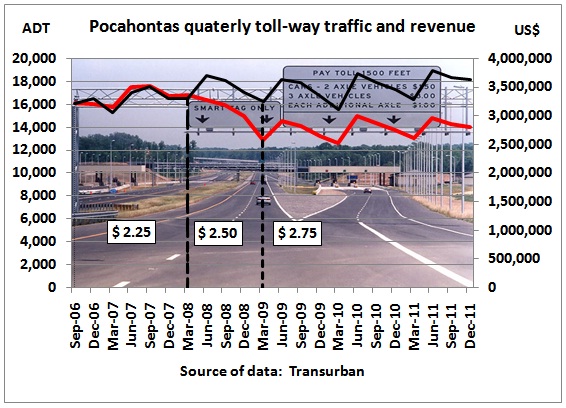 We see the seasonal fluctuations. Traffic decreased when the toll was increased to $2.50, just at the height of the financial crisis. A further increase to $2.75 did not lift revenue very much. That was expected but what was not factored in were higher petrol prices following the peaking of crude oil production which started in 2005. Both the sensitivity and the risk analysis were flawed.
We see the seasonal fluctuations. Traffic decreased when the toll was increased to $2.50, just at the height of the financial crisis. A further increase to $2.75 did not lift revenue very much. That was expected but what was not factored in were higher petrol prices following the peaking of crude oil production which started in 2005. Both the sensitivity and the risk analysis were flawed.
Not only the toll-way projections were wrong but the airport projections, too.
Commercial airport forecasts
We can see the projections never materialized. The actual traffic stats are form here:
http://en.wikipedia.org/wiki/Hirsch_repor
but the US government failed to communicate this research to State governments and banks.
Nevertheless, the report appeared on the website of the Minnesotans for Sustainability
 http://www.mnforsustain.org/oil_peaking_of_world_oil_production_study_hirsch.htm
http://www.mnforsustain.org/oil_peaking_of_world_oil_production_study_hirsch.htm
and was widely discussed on the web.
In May 2005, Matt Simmons published his book “Twilight in the desert, the coming Saudi oil shock and the world economy” http://en.wikipedia.org/wiki/Matthew_Simmons
The shock came in 2007/08 when Saudi Arabia’s oil production dropped.
One of my incremental graphs, from November 2007, showing a decline in Saudi production over the period 2006/07:
In October that year I wrote an article with an oildrum editor, Gail Tverberg, titled “Did Katrina hide the real peak in world oil production?” http://www.theoildrum.com/node/3052
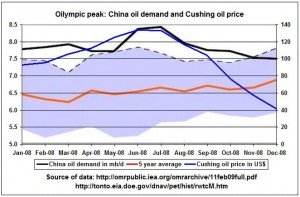 Using data from the IEA Monthly Oil Market Report there was an extra demand of 800 kb/d from China for the Olympic Games. Saudi Arabia did not have sufficient spare capacity to deliver without oil prices skyrocketing.
Using data from the IEA Monthly Oil Market Report there was an extra demand of 800 kb/d from China for the Olympic Games. Saudi Arabia did not have sufficient spare capacity to deliver without oil prices skyrocketing.
Causes and Consequences of the Oil Shock of 2007–08
Whereas historical oil price shocks were primarily caused by physical disruptions of supply, the price run-up of 2007-08 was caused by strong demand confronting stagnating world production. Although the causes were different, the consequences for the economy appear to have been very similar to those observed in earlier episodes, with significant effects on overall consumption spending and purchases of domestic automobiles in particular. In the absence of those declines, it is unlikely that we would have characterized the period 2007:Q4 to 2008:Q3 as one of economic recession for the U.S. The experience of 2007-08 should thus be added to the list of recessions to which oil prices appear to have made a material contribution.
Matt Simmons was right but few seem to have understood the links.
Conclusion:
Outdated, peak oil ignorant traffic projections should not be recycled and polished up to get another life in revised project documents. They should be thrown where they belong, in the bin.
Links related to Transurban
11/2/2011
Money in Transurban’s cash box not enough to complete M2 widening
http://crudeoilpeak.info/money-in-transurban%e2%80%99s-cashbox-not-enough-to-complete-m2-widening
9/12/2010
Will Transurban ever pay back its debt? (part 2)
http://crudeoilpeak.info/will-transurban-ever-pay-back-its-debt
15/11/2010
Transurban’s M7 traffic 38% less than expected
http://crudeoilpeak.info/transurban%e2%80%99s-m7-traffic-38-less-than-expected
11/11/2010
Tollopoly on Sydney’s orbital
http://crudeoilpeak.info/tollopoly-on-sydney%e2%80%99s-orbital
12/2/2012
Car addicted Sindney destroys bus ramp near rail hub as tollway debt increases 60% at least
Other links on the Pocahontas tollway
Identification of key input variables for the calibration scenario
The Transportation Infrastructure Finance and Innovation Act (TIFIA) program
http://www.fhwa.dot.gov/ipd/tifia/
Public-Private Transportation Act – Completed Projects
http://virginiadot.org/business/ppta-CompletedProjects.asp
Currently the Parkway is being used by some 50% of the traffic forecast
The National Council for Public-Private Partnerships
Pocahontas Parkway, an 8.8 mile stretch of highway south of Richmond, Virginia, opened to motorists in 2002 after a four-year construction period. Originally designed and built by Fluor Daniel/Morrison Knudsen, the parkway was repackaged and leased to Transurban in June 2006 for 99 years. Due to serious overestimates in traffic and revenue generation, the parkway was in danger of defaulting on upcoming debt service payments in 2005
http://www.ncppp.org/cases/pocahontas.shtml
Route 895 – Pocahontas Parkway
http://www.roadstothefuture.com/Route_895_Connector.html#Introduction
